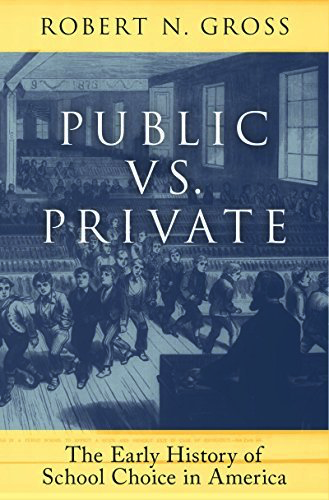
This caught my eye. I’ll have to read it to see how much he discusses other non-government schooling options.
“The public school is not as American as apple pie,” writes Paul Peterson, director of Harvard’s Program on Education Policy and Governance, in a review ofPublic vs. Private. The book by Robert Gross on the “early history of school choice” deals with the fight to create religious alternatives to secular education.
Massachusetts passed the first compulsory education law was passed in 1852 in response to Catholic immigration. The secular school system was designed to suppress “popery.”
Catholics created their own schools, then fought to defend them.
Protestants, secularists, and public-school advocates proposed (and sometimes enacted) regulations that charged children with truancy if they attended Catholic schools; taxes on Catholic school property; bans on private schools that taught children in a language other than English; and constitutional amendments forbidding the use of public dollars to support even the secular instruction provided by a Catholic school.
In 1925, in Pierce v. Society of the Sisters of the Holy Names of Jesus and Mary, the U.S. Supreme Court struck down an Oregon law that compelled all children to attend a public school, write Peterson. “However, it did not deny the right of the state to oversee the education of its citizens, leaving open the question as to just how much regulation could be imposed on private schools—or, later, on homeschoolers.”
Via Joanne Jacobs